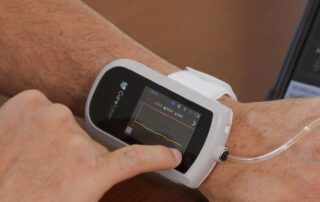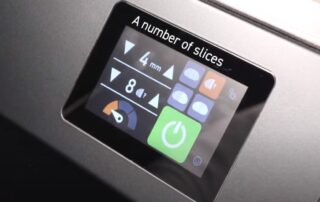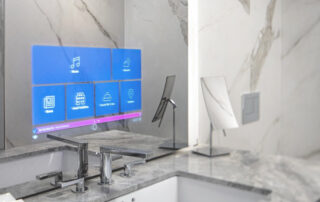PIXXI-28 Processor
The PIXXI-28 Processor is a configurable custom graphics controller ideally suited for embedded applications. The chip can be configured to interface with many popular TFT-LCD and OLED displays. Powerful graphics, text, images, animation, hardware peripherals, and countless more features are built right inside the chip. It offers a simple interface to many colour LCD and OLED displays, with or without resistive or capacitive touch panels.
PIXXI-28 has a configurable core layer and hardware layer, which allows it to support LCD modules with various SPI display drivers and touch interfaces. Supported display interfaces include 3-wire serial SPI and 4-wire serial SPI. On the other hand, supported touch interfaces include a 4-wire resistive touch panel interface and a capacitive touch panel interface through an I2C touch controller. Configuration of the processor is possible through a powerful, automated software tool that enables the designer to define the core and hardware layers. This design methodology takes away the burden of low-level design, and it offers an enormous advantage in terms of design flexibility, development time, and cost savings.
Information about the processor
- Low-cost TFT-LCD and OLED display graphics user interface solution.
- Ideal as a standalone embedded graphics processor or interface to any low-cost host controller as a graphics co-processor.
- Configurable hardware and core layers which enables support for TFT and OLED with 3-wire and 4-wire serial SPI and MCU 8-bit interfaces. All data and control signals are provided.
- Configurable hardware and core layers that enable support for a 4-wire Resistive Touch Panel interface and Capacitive Touch Panel interface through an I2C capacitive touch controller.
- Built-in high-performance Processor core (EVE) with an extensive byte-code instruction set optimised for 4DGL, the high-level 4D Graphics Language.
- Built-in highly optimised Configurable-Core that takes care of low-level services such as Display Drivers, Graphics Primitives, Fonts, Multimedia, FAT16 Files, Touch Panel, and much more.
- A comprehensive set of built-in graphics and multimedia services that allow users with minimal experience to create high-quality graphics applications.
- Display full-colour widgets, images, animations, icons, and video clips. that enables the designer to define the core and hardware layers. This design methodology takes away the burden of low-level design, and it offers an enormous advantage in terms of design flexibility, development time, and cost savings.
- Free comprehensive Software Development Tools (Workshop4) that allow the designer to configure the core and hardware layers. Workshop4 also provides drag-and-drop widgets for rapid application development.
- Dedicated SPI interface for either SD memory card (SD with up to 2GB or SDHC memory cards starting from 4GB and above) or Serial Flash memory chip (up to 16 MB) for multimedia storage and data logging purposes.
- 32KB of Flash memory for user application code.
- 14KB of SRAM for user variables.
- 7 General Purpose I/O pins for user interfacing. Depending on the processor mode of configuration, the GPIO pins are variously configurable for alternative functions such as:
- 2x Analog Input channels
- 2x I2C ports (master mode, maximum supported speed is fast mode)
- 1x dedicated UART port. Asynchronous hardware serial, with 300 to 2187500 baud. The same UART port is also used for device programming.
- Audio support for wave files and complex sound generation with a dedicated 16-bit PWM audio output.
- PWM output pin for backlight LED brightness control.
- 8 x 16-bit timers with 1-millisecond resolution.
- 12MHz oscillator for external crystal with built-in PLL providing 70 MHz system clock.
- Single 3.3 Volt Supply (3.0V to 3.6V range).
- -40°C to 85°C extended temperature range.
- Available in a 28-pin QFN 6x6x0.9 mm package.
- RoHS compliant.
The PIXXI-28 includes the following items:
- PIXXI-28 Processor
WORKSHOP4 IDE
Tailored Development for 4D Processors and Modules

Workshop4 IDE is a comprehensive software development environment specifically designed for the 4D family of processors and modules. Whether you are a seasoned developer or just starting out, Workshop4 provides the perfect platform tailored to your development needs. This versatile IDE supports all core development processes, including code writing, compiling, linking, and transferring code to your target device.
Workshop4 IDE let you choose from four distinct environments—Designer, ViSi, ViSi-Genie, and Serial—each catering to different development preferences and project specifics. This flexibility allows developers to select the most suitable environment for their tasks.
Workshop4 IDE is your go-to development companion in the 4D ecosystem, simplifying complex tasks and enhancing productivity through its user-friendly and versatile design. Whether coding manually or designing visually, Workshop4 elevates your development experience to new heights.
Order Now
PIXXI-28
SKU:
Price: US$13.50












